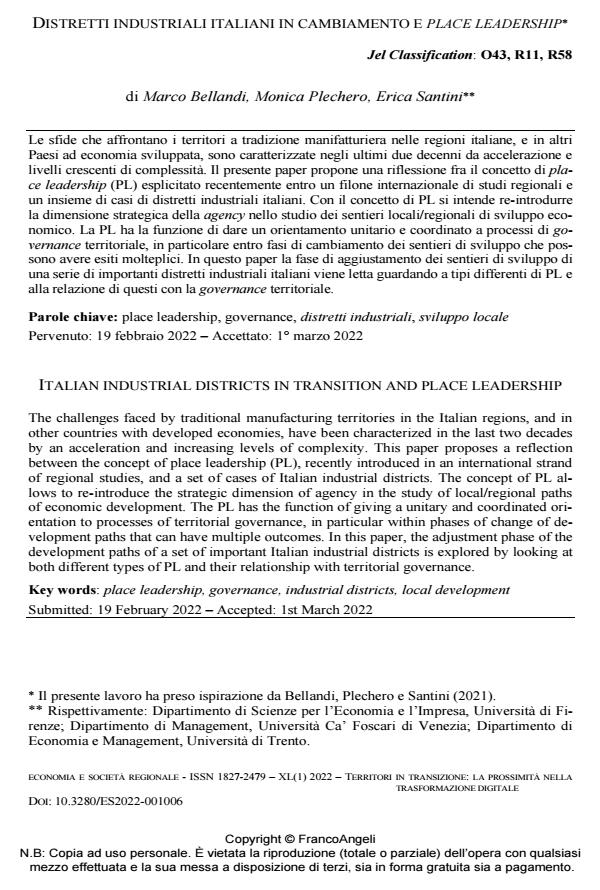Italian industrial districts in transition and place leadership
Journal title ECONOMIA E SOCIETÀ REGIONALE
Author/s Marco Bellandi, Monica Plechero, Erica Santini
Publishing Year 2022 Issue 2022/1
Language Italian Pages 10 P. 73-82 File size 245 KB
DOI 10.3280/ES2022-001006
DOI is like a bar code for intellectual property: to have more infomation
click here
Below, you can see the article first page
If you want to buy this article in PDF format, you can do it, following the instructions to buy download credits

FrancoAngeli is member of Publishers International Linking Association, Inc (PILA), a not-for-profit association which run the CrossRef service enabling links to and from online scholarly content.
The challenges faced by traditional manufacturing territories in the Italian regions, and in other countries with developed economies, have been characterized in the last two decades by an acceleration and increasing levels of complexity. This paper proposes a reflection between the concept of place leadership (PL), recently introduced in an international strand of regional studies, and a set of cases of Italian industrial districts. The concept of PL allows to re-introduce the strategic dimension of agency in the study of local/regional paths of economic development. The PL has the function of giving a unitary and coordinated orientation to processes of territorial governance, in particular within phases of change of development paths that can have multiple outcomes. In this paper, the adjustment phase of the development paths of a set of important Italian industrial districts is explored by looking at both different types of PL and their relationship with territorial governance.
Keywords: place leadership, governance, industrial districts, local development
Jel codes: O43, R11, R58
Marco Bellandi, Monica Plechero, Erica Santini, Distretti industriali italiani in cambiamento e place leadership in "ECONOMIA E SOCIETÀ REGIONALE " 1/2022, pp 73-82, DOI: 10.3280/ES2022-001006